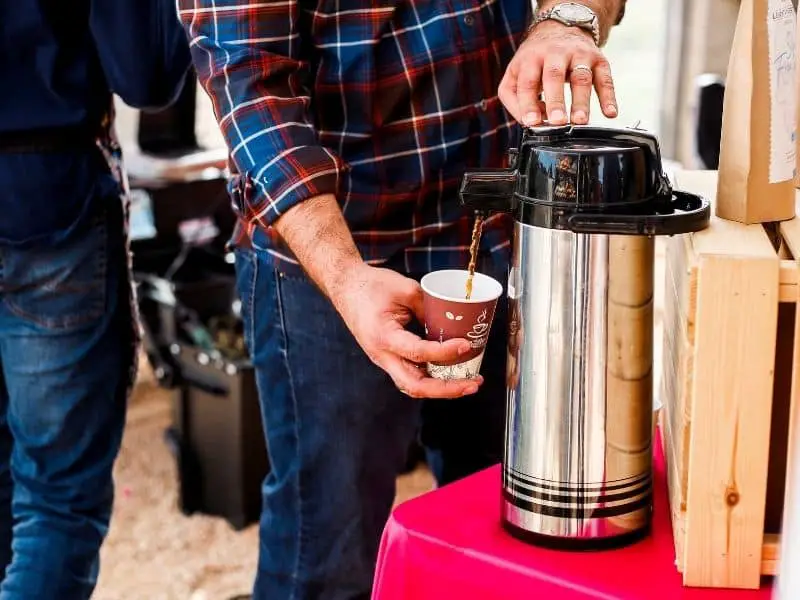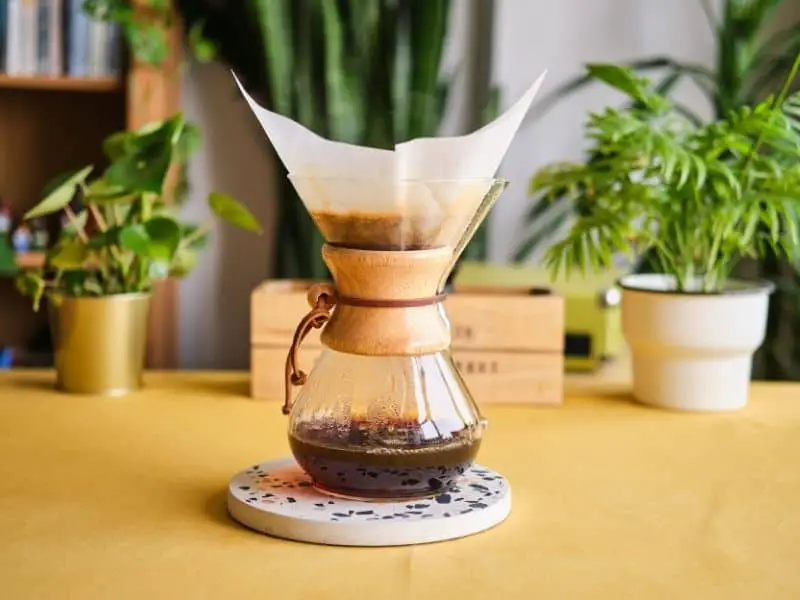There are few things that can beat the feeling of waking up to a fresh pot of coffee. It’s no surprise that many people consider it the quintessential morning ritual.
And, if you’re one of those people, there are some details about your beloved morning brew, and in particular, the “pot” that you may not know.
For example, what is a carafe, how to use a coffee carafe, the differences between a coffee carafe and a decanter, and much more.
But first of all, what is a coffee carafe?
What is a coffee carafe?
It was back in the 1600s when coffee started to become really popular worldwide, that the coffee pot evolved. It became an “all in one” tool, that you could make coffee in, and keep it hot until you drank it all.
These days they are known as Coffee Carafes. Usually, a thermal jug, designed with double thickness walls. The coffee can be brewed in the carafe and kept at the desired temperature for almost 12 hours.
Well, not quite: after a few hours, the temperature of the beverage will fall by a few percent, but will still be hot enough to drink. There is a huge range of coffee carafes available today, the most common type being a stainless steel jug.
The advantage of a carafe over a simple coffee pot is that it does not need to be kept on a hot plate, and you can take it with you to a picnic in the park, or a sports event, and still drink hot coffee.

Coffee Carafe vs Decanter: What’s the difference?
Decanting wine has long been known to improve the flavor by exposing the wine to air, reducing the tannins, and leaving residue, or lees as they are known, in the decanter.
Exposure to air probably doesn’t do a lot for coffee, and decanting is usually done to remove coffee grounds before they end up in your cup.
This doesn’t need to happen with espresso or drip/filter coffee since the grounds are retained in the brewing process.
However, a classic example of decanting coffee is the French Press, where grounds are mixed with hot water and so the coffee needs to be decanted, which the French Press does.
In most cafes, a decanter is a glass jug used with a drip coffee machine, the decanter sits on a hot plate, and in that situation, the coffee usually has about a 30-minute shelf life before the quality starts to deteriorate.
The constant heat is not the coffee’s friend, and after about an hour it will end up fairly bitter, almost undrinkable.
In a decent carafe, it is kept hot and sealed from the air without an external heat source, so the flavor lasts a lot longer.
Glass Carafe vs Thermal Carafe
Just to confuse everyone, the glass jug that normally comes with a drip coffee machine is also called a carafe.
Like a decanter, it needs a heat source to stay hot, which we know is not great for holding coffee for long periods, and the top is usually open or has a loose-fitting lid for easy pouring.
However, the advantage of glass is that it does not retain flavors. For example, you can use it to serve orange juice, rinse it out, and use it for coffee without noticing any strange flavor effects.
Thermal carafes are usually made from stainless steel and have a double wall with a vacuum between them. It has an air-sealed lid and doesn’t need a hot plate; in fact, coffee maker machines that use a thermal carafe do not usually come with a hot plate.
One point in favor of a glass carafe is that it is easy to see how much coffee is left in it, whereas with a stainless steel carafe, you have to pick it up and give it a shake and then guess if your carafe is half full or half empty.
How to use a coffee carafe
There are two methods for brewing using a carafe. In the first, you can use a drip machine, like in most cafes and diners.
You simply put the desired amount of grounds into the filter-basket, either using a paper filter or a reusable mesh filter.
The paper filter is a simpler option, when the coffee is brewed you just pick up the filter, grounds and all, and throw it away. With a reusable filter, you have to empty it out and clean it before using it again.
Anyway, the next step is just to press the start button, the machine does the rest, and the brew drips into the carafe. A disadvantage is that you have no control over the speed at which the water pours or the total brewing time.
The second method, which is more for home use, is the pour-over.
As the name implies, you pour hot water over the grounds in the filter. This method is said to produce a much better brew and requires some patience.
First, you pour some hot water in a circular pattern around the grounds, stop pouring, and wait for that to drip through into the carafe.
After a few minutes, start again, pouring in a spiral around the grounds until all the water is finished.
The beauty of this method is that you have total control over how much water and how quickly you pour; less will result in a stronger brew, more in a weaker, depending on your taste.
What is a Chemex?
We really can’t finish without thinking about the king of carafes, the Chemex.
Although it seems to be a recent invention due to its popularity among coffee lovers today, it was actually created in 1941 by a chemist who wanted to devise a perfect way to brew coffee.
It is a rather elegant, hour-glass-shaped glass carafe with some unique features. It has a special channel along the neck so that hot air can escape during the brewing process.
It has a wooden collar around the neck so that it can be picked up when the glass is hot. And it uses special double-bonded paper filters, which slow down the rate at which the grounds absorb water, and filter out most of the bitter-tasting oils.
Of course, being the invention of a chemist, there are specific instructions: you should use 40 to 50 grams of coffee to 700 mils of water; a small amount of water is poured over the grounds first, to let the coffee “bloom”.
After about 45 seconds, the rest of the water is poured, filling the filter. The water then will slowly percolate through into the bottom half of the carafe, in around 4 minutes.
Then remove the filter and the grounds, and pour your coffee – it’s that simple!

Conclusion
As you can see, a coffee carafe can play an important role in your home, especially if you love to have fresh coffee brewed for you throughout the day.
While it can be a confusing subject with a lot of crossover in names, the main idea is a device that can brew and store coffee, all-in-one.
You also get “jugs” below percolators with the same name, but those are purely for storing the coffee before pouring it into a cup to drink.
Now, we hope that this article gave you a better understanding of what a coffee carafe is and how to use it for a great tasting brew.
